- Understanding the Role of Geomembrane Liners in Waste Management
- Innovations in Geomembrane Liners for Water Management
- Geomembrane Liners: A Comprehensive Guide
- The Future of Geomembrane Liners in Civil Engineering
- Geomembrane Liners: Enhancing Landfill Stability
Manager:Alvin Wang
WhatsApp:+62 8983806051
Tel:+86 10-5797-1075
Email:steelwang@okorder.com
Address:3rd Floor, No.2 Building, No.1 Sanlihe Road
What is a geomembrane?
Geomembrane, also known as anti-seepage membrane, is a geosynthetic material specially used to prevent the penetration of water, liquid or gas. It is usually made of high-density polyethylene (HDPE), low-density polyethylene (LDPE), polyvinyl chloride ( Film-like material made of polymer materials such as PVC).
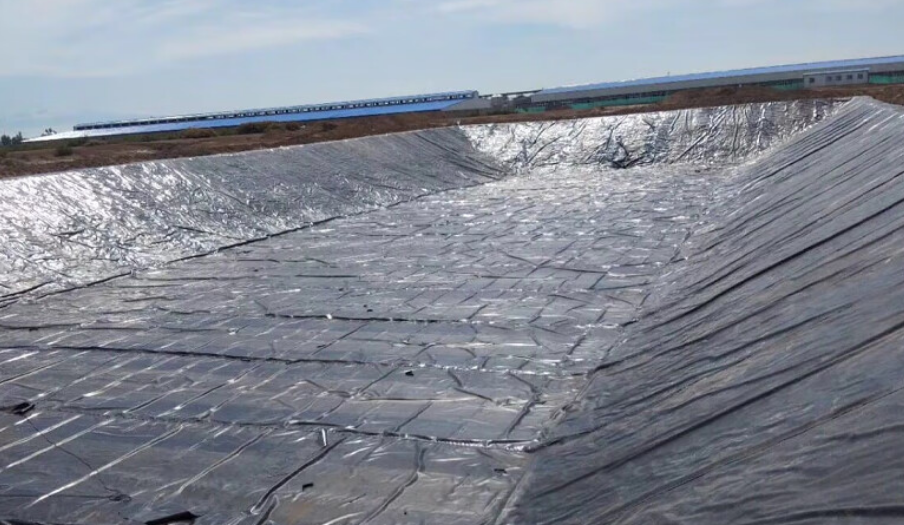
The main functions of geomembrane include isolation and anti-seepage, so it is also widely used to prevent soil pollution and water resource loss. In water conservancy projects, geomembrane is often used for anti-leakage treatment in reservoirs, dams and other projects; in environmental protection In the field of transportation, it is widely used for anti-seepage treatment in landfills and sewage treatment plants; in the transportation field, geomembranes are also often used for waterproofing and moisture-proof treatment in roads, bridges and other projects.
The characteristics of geomembranes include excellent environmental stress cracking resistance, chemical corrosion resistance, durability and reliability, as well as a wide operating temperature range and long service life. It is also stretch-, tear-, and puncture-resistant and has an extremely low permeability coefficient. In addition, the geomembrane also has the ability to resist ultraviolet rays, can be exposed to the atmosphere for a long time, has good aging resistance, and can also resist various biological effects, such as rat bites, insect infestations, and mold growth.
Geomembrane Characteristics
Composite geomembrane uses a plastic film as the anti-seepage base material and a Non-woven fabric to form a geotechnical anti-seepage material. Its anti-seepage performance mainly depends on the anti-seepage performance of the plastic film. Plastic films used for anti-seepage at home and abroad mainly include polyvinyl chloride (PVC), polyethylene (PE), and ethylene/vinyl acetate copolymer (EVA). They are polymer chemically flexible materials with small specific gravity and good extensibility. Strong, high ability to adapt to deformation, corrosion resistance, low temperature resistance, and good frost resistance.
The service life of the composite geomembrane is mainly determined by whether the plastic film loses its anti-seepage and water-proofing effect. According to the Soviet national standards, a polyethylene film with a thickness of 0.2m and a stabilizer used in hydraulic engineering will not survive under clear water conditions. The working life can reach 40 to 50 years, and the working life under sewage conditions is 30 to 40 years. Therefore, the service life of the composite geomembrane is sufficient to meet the service life of the dam's anti-seepage requirements.
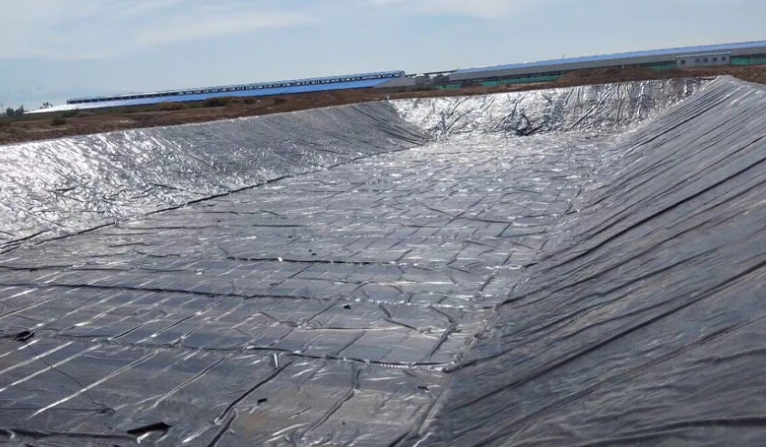
Geomembrane application range
The Zhoutou Reservoir Dam was originally a core wall dam, but due to the collapse of the dam, the upper part of the core wall was disconnected. In order to solve the upper anti-seepage problem, an anti-seepage inclined wall was originally added. According to the safety demonstration analysis of Zhoutou Reservoir Dam, in order to solve the leakage weak surface and dam foundation leakage caused by multiple landslides of the dam, bedrock curtain grouting, contact surface grouting, and flushing were adopted in terms of vertical anti-seepage. Anti-seepage bodies such as backfill curtains and high-blasting anti-seepage board walls are formed in the grab casing wells. The upper part of the inclined wall is covered with a composite geomembrane to prevent seepage, and the lower part is connected to the vertical anti-seepage wall, reaching an elevation of 358.0m (0.97m higher than the calibrated flood level) .
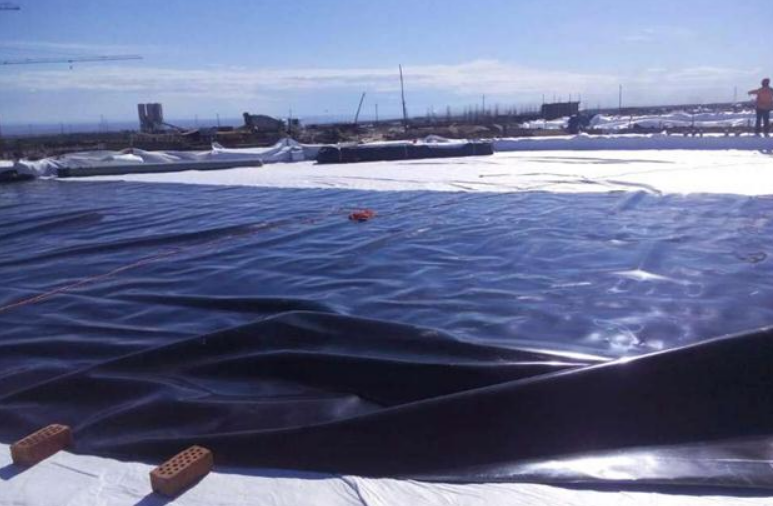
Geomembrane selection
There are many geomembrane manufacturers in the world, and their product specifications are also varied, including one cloth and one membrane, one cloth and two membranes, two cloths and one membrane, two cloths and two membranes, and multiple cloths and multiple membranes. Models include 200g/m2~1000g/m2, etc. Users can also make requests based on their actual conditions, and the manufacturers can produce them individually according to the requirements.

Geomembrance main application
1. hdpe Geomembrane is suitable for environmental protection and sanitation: such as landfills, sewage treatment plants, power plant regulating pools, industrial, hospital solid waste, etc.;
2. LDPE anti-seepage membrane is suitable for water conservancy projects: such as anti-seepage, plugging and reinforcement of rivers, lakes and reservoirs, anti-seepage of water channels, vertical core walls, slope protection, etc.;
3. HDPE anti-seepage membrane is used in municipal projects: subways, building underground projects, planting roofs, roof gardens, and sewage pipe anti-seepage;
4. Polyethylene anti-seepage membrane is suitable for gardens: artificial lakes, rivers, reservoirs, golf course pond bottoms, slope protection, green lawns, etc.;
5. High-density polyethylene geomembrane is suitable for petrochemical: chemical plants, refineries, oil storage tank anti-seepage, chemical reaction tanks, sedimentation tank linings, secondary linings, etc.;
6. Polyethylene geomembrane is suitable for mining: washing tanks, heap leach tanks, ash dumps, dissolving tanks, sedimentation tanks, stockpiles, tailings bottom lining anti-seepage, etc.;
7. Low-density polyethylene film is suitable for transportation facilities: foundation reinforcement of highways and anti-seepage of culverts;
8. LDPE anti-seepage membrane is suitable for agriculture: anti-seepage of reservoirs, drinking water pools, storage ponds, and irrigation systems;
9. HDPE film is suitable for aquaculture industry: intensive and factory farming ponds, fish ponds, shrimp pond linings, sea cucumber circle slope protection, etc.;
10. High-density polyethylene anti-seepage membrane is suitable for salt industry: salt field crystallization pond, brine pond thatch cover, salt film, salt pond plastic thatch film.
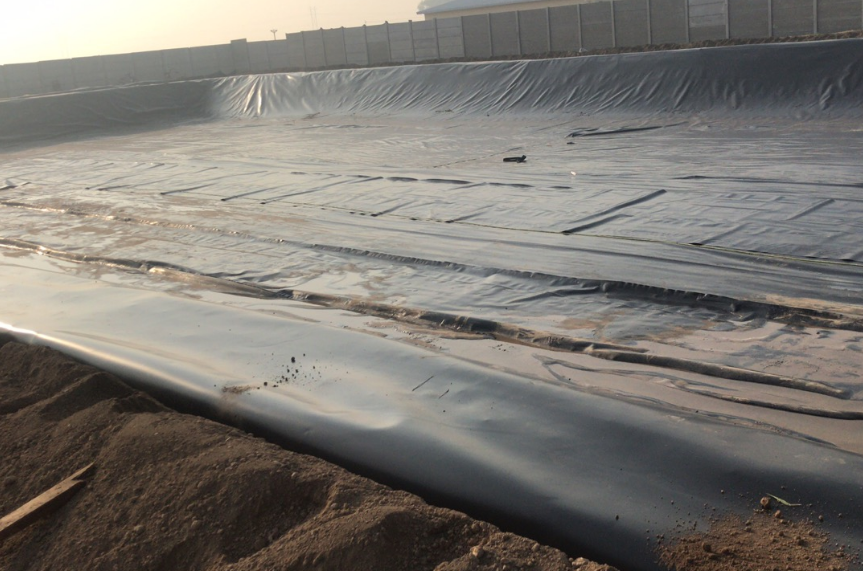
Geomembrane construction method
Do not drag or pull the geomembrane during transportation to avoid being stabbed by sharp objects.
1. It should be extended from the bottom to the high position. Do not pull it too tightly. There should be a margin of 1.50% to prepare for local sinking and stretching. Taking into account the actual conditions of this project, the side slopes are laid in order from top to bottom;
2. The longitudinal joints of two adjacent panels should not be on a horizontal line, but should be staggered by more than 1m from each other;
3. The longitudinal joint should be more than 1.50m away from the dam foot and bent foot, and should be located on a flat surface;
4. Go to the slope first and then to the bottom;
5. When laying on the slope, the direction of the film expansion should be basically parallel to the maximum slope line.
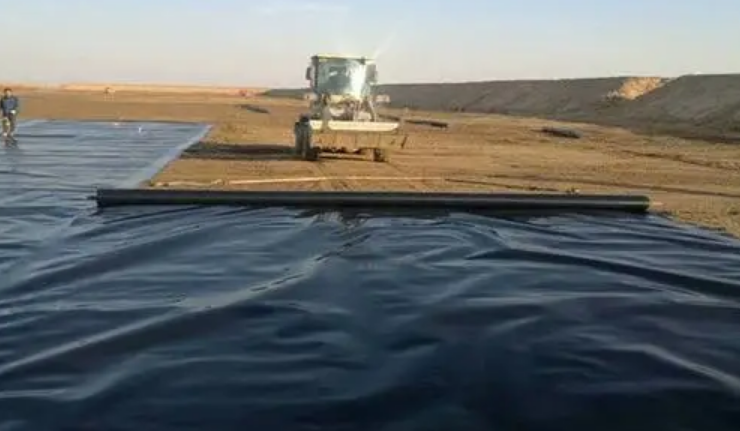
Geomembrane laying
1. Before laying the geomembrane, the corresponding acceptance certificate of the civil engineering project should be obtained.
2. Before cutting the geomembrane, its relevant dimensions should be accurately measured and then cut according to the actual size. Generally, it is not suitable to cut according to the size shown in the figure. The pieces should be numbered one by one and recorded in detail on a special form.
3. When laying geomembrane, we should strive to minimize welds and save raw materials as much as possible while ensuring quality. It is also easy to ensure quality.
- Previous:What Does Geotextile Do?
- Next:no more
-
2024-12-05Geomembrane Liners: A Comprehensive Guide






